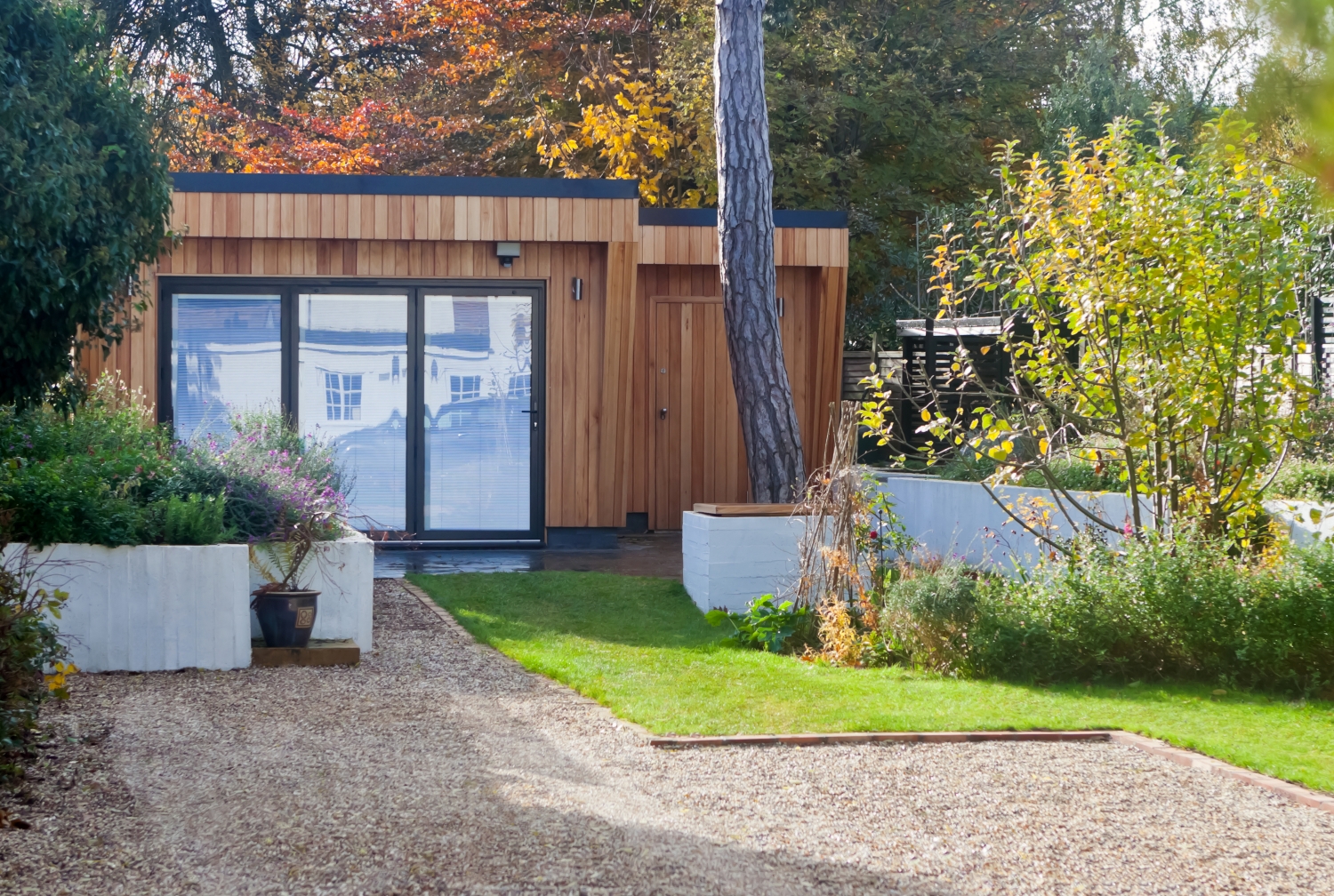
Daniel McKane, Sales Director from YBS Insulation gives us the low-down on choosing insulation solutions for all types of garden building.
With summer here, many people are looking to make the most of their outdoor space – meaning you could well see an increase in enquires for garden rooms. But with the unpredictable weather in the UK, making these inside/outside buildings habitable year-round requires careful consideration when it comes to the insulation, both to preserve warmth in the winter and to deflect high temperatures during the (sometimes fleeting) British summer.

Choosing the right insulation offers several benefits:
1. Enhanced Comfort
Proper insulation ensures that your garden room remains comfortable throughout the year, providing a pleasant environment regardless of the weather outside.
2. Options
Properly insulating a garden room from the beginning gives you more options on what you can use the space for and means the purpose of the room can be changed at any time.
3. Energy Efficiency
Insulation helps reduce the amount of energy needed to heat or cool a garden room, leading to lower energy bills and a reduced carbon footprint.
4. Noise Reduction
Insulation materials can also help dampen sound, making a garden room a quieter and more peaceful space that’s secluded from the noise of the outside world.
5. Moisture Control
Effective insulation helps prevent condensation and moisture buildup, which are common issues in spaces that experience temperature fluctuations, reducing the risk of mold and mildew, which can damage the structure and items within and affect indoor air quality.
6. Increased Property Value
A well-insulated garden room can add value to your customer’s property by providing a functional and energy-efficient additional living space.
This makes a garden room a healthier environment for work or relaxation. Whether your customer is using a garden room as a home office, studio, summer house or den, insulation ensures it’s a versatile space that meets all needs, all year round.

Considerations for garden room insulation installation
When planning the insulation for a garden room, several factors need to be considered to ensure optimal performance and longevity.
- The local climate plays a significant role in determining the type and amount of insulation needed.
- The insulation plan must comply with local building regulations and standards.
- In some cases, a vapour barrier may be necessary to prevent moisture from passing through the insulation and causing condensation.
- Effective air sealing is essential to complement the insulation. Gaps, cracks, and openings in the building envelope should be sealed to prevent air leakage and enhance the overall thermal performance.
Material choice
To achieve optimal insulation, it is essential to insulate all parts of the garden room: walls, floors, roofs, and windows – and each area requires specific insulation techniques and materials. Multifoil insulation represents a highly effective option. In simple terms, it combines multiple layers of reflective foil with low-emissivity surfaces, separated by layers of foam or fibre wadding. This composition allows it to combat all three types of heat transfer – conduction, convection and radiation.

Performance benefits
One of the primary advantages of multifoil insulation is its excellent thermal performance. Despite being relatively thin compared to traditional insulation materials, multifoil can provide insulation values equivalent to much thicker layers of better-known alternatives. For example, some multifoil products can offer thermal performance equivalent to 130mm of mineral fibre insulation, while others can match the performance of 75mm.
This high performance is achieved through the reflective properties of the foil layers, which bounce radiant heat back into the living space during winter and reflect solar heat away from the building in summer. This dual action helps maintain a comfortable indoor temperature all year round, potentially reducing energy costs and improving the overall energy efficiency of a home.
Saving space
Multifoil insulation’s slim profile makes it an excellent choice for projects where maximising living space is crucial. Its thinness allows for greater flexibility in design and can be particularly beneficial in smaller out buildings where every centimetre counts.
Moreover, multifoil insulation can often serve multiple purposes. Some products can act as both insulation and a vapour control layer, while others can function as insulation and a breather membrane. This multi-functionality can simplify the construction process and potentially reduce the overall thickness of wall or roof build-ups.
Simple installation
The installation process is straightforward – the insulation is typically unrolled and fixed in place using staples or battens. Joints are then sealed with specialised tape to ensure continuity of the insulation layer and achieve a professional-looking result.
Building regulations compliance
As building regulations continue to tighten in the pursuit of more energy-efficient homes, multifoil insulation can play a crucial role in meeting these standards. The Future Homes and Buildings Standard, which is set to be introduced in 2025, will require significantly improved U-values for various building elements. Multifoil insulation, when used as part of a well-designed insulation strategy, can contribute to achieving these targets.
For more information on YBS Insulation visit www.ybsinsulation.com.







